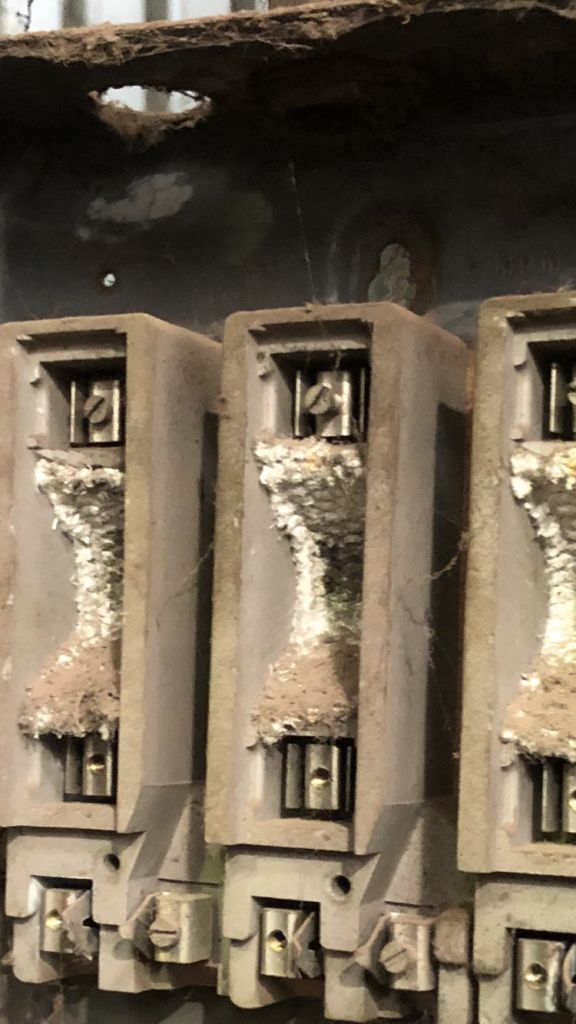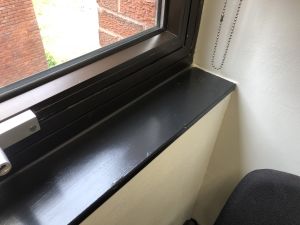How to identify asbestos
Last Updated on 4 July 2023
How do I know if I have found asbestos?
Want to know if you’ve found asbestos in your property and how to identify it? In many cases you would not know if you found asbestos, and there are a number of reasons for this.
If we start at the beginning, by complying with current legislation (Control of Asbestos Regulations 2012), we would already know if we had asbestos in a place where we are working.
This could be physically undertaking a task such as building work or just being present in a building where asbestos is also present.
We would know, because the law requires us to ensure appropriate asbestos surveys are conducted prior to anyone working in or occupying buildings, built before the year 2000 (asbestos was banned in Late 1999). This would ensure we know where asbestos is present, and we would be aware of the condition of the material via appropriate risk assessments in the asbestos survey report.
So what reasons would cause us to encounter possible asbestos and then need to ‘know’ what the material is and how to identify it?
If there is no asbestos information available then this could be a reason. Homeowners doing DIY, or tradesmen working in domestic properties where they have started work without an asbestos survey may be a reason.
Another reason could be that building works have uncovered a hidden material that was not visible during a previous survey.
How to identify asbestos containing materials
Asbestos is a naturally occurring, mined mineral, that is generally added to another material, to form a building product.
For example, an asbestos cement product is usually a cement structure such as a pipe or sheet where asbestos fibre is added during production. Asbestos is generally added to the cement to strengthen the end product, due to its flexibility.
There are around 4000 products that contain asbestos and we refer to these as asbestos containing materials or ACM’s for short. Asbestos can be present as a small element, less than 2% such as Artex textured coating, or as the main constituent and approaching 100%, such as pipe insulation.
However, because asbestos fibres are frequently too minute to be visible to the human eye, it is not always feasible to identify if a product contains asbestos just by looking at it.
Therefore, knowing if the material is asbestos or not is in most cases difficult to say the least, as it can be hard to spot. But despite this, there are a few actions you may take to identify whether a product contains asbestos or not:-
-
Examine the product’s age:
If it was made before the 1980s, it may contain asbestos. Asbestos was widely used in construction materials and consumer items until it was prohibited in the United Kingdom in 1999.
-
Look for warning labels:
Some goods that contain asbestos may have caution labels stating that the substance is present. However, because not all items will have these labels, this approach is not 100% reliable.
-
Conduct a professional asbestos survey:
A professional asbestos survey entails collecting samples of suspect materials and having them tested in a laboratory. This is the most reliable method used to identify and determine whether a product contains asbestos.
-
Be wary of common asbestos-containing products:
Asbestos was frequently utilised in building materials such as insulation, roofing tiles, and cement, as well as consumer items like brake pads and thermal insulation for appliances. If you believe that any of these goods are present in your home or office, you should get them examined by a specialist asbestos surveyor.

Example of hidden place where asbestos can be found. Asbestos woven textile in an old fuse carrier. Many electricians don’t realise the material is 100% Chrysotile asbestos
Get the suspect material tested to identify asbestos
In many cases though, even experienced surveyors are unsure if a product contains asbestos, as it can be well hidden within another material, and therefore difficult to identify.
So our advice In all cases would be that the material be tested in an accredited laboratory in order to confirm and identify if asbestos is present or otherwise.
Testing is relatively inexpensive and usually around £10 – £25 for samples that arrive at the laboratory. If a trained asbestos surveyor is taking the sample on your behalf there will clearly be a further cost for the site visit and delivery.

Another good example of ‘hidden’ asbestos found in a window sill which could have easily been missed
How likely is it that a property contains asbestos?
The likelihood that a property contains asbestos is determined by various factors, including the age of the property and the materials employed in its construction.
Asbestos was commonly used in construction materials until it was prohibited in the UK in 1999.
As a consequence, asbestos containing materials/ACM’s are regularly found within both domestic and commercial properties.
For properties built before the year 2000, asbestos can be in as many as 80% or more depending on when it was built.
In certain time frames and build types such as 1960’s residential property, asbestos can be present in well above 90% of these. The 1960’s were the peak of use of asbestos materials and the UK was one of the largest producers.
Asbestos-containing construction materials that are commonly identified include:-
- Vinyl floor tiles and adhesives
- Ceiling tiles
- Thermal insulation (e.g. pipe insulation)
- Asbestos cement (e.g. roofing tiles and corrugated sheeting)
- Lagging (e.g. around boilers and pipes)
- Textured coatings (e.g. artex)
It should be noted, however, that not all houses built before 1999 will contain asbestos. Furthermore, asbestos was used in varying quantities and materials, therefore the chance of discovering asbestos in a property varies greatly.
Final thoughts on identifying asbestos
Exposure to asbestos is the single biggest killer of people at work in the UK with over 5000 people dying every year.
The World health Organisation WHO say that “there is no known safe level of exposure to asbestos”. It is important therefore to ensure you have the appropriate type of asbestos survey prior to occupying a building or carrying out work on it.
As asbestos can be highly dangerous to your health, it should only ever be handled by skilled specialists who use the necessary safety precautions.
So If you believe that you’ve possibly identified a product that contains asbestos, do not attempt to handle it yourself; instead, seek the guidance of a professional asbestos surveying company such as ours who can help to identify it.
If you need any advice on how to identify asbestos in any properties you own, maintain or control, then please contact us on 0800 141 2676, email us at info@rbasbestos.co.uk or fill in the form below.

